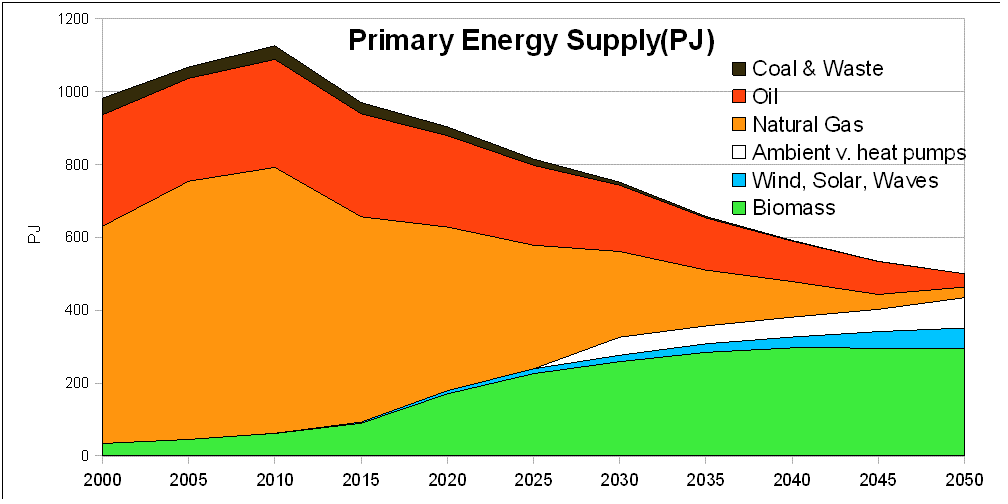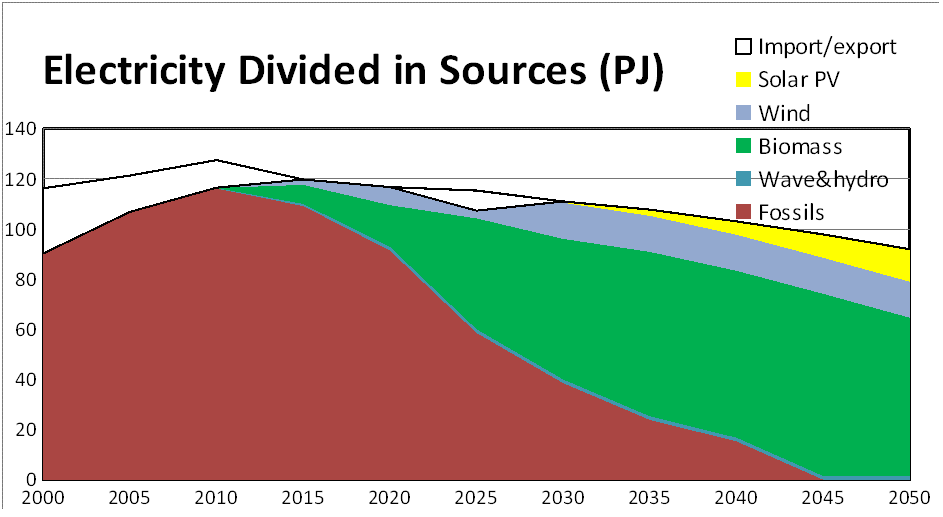| About Us | Contact Us | Member Database | Contact Database | Support Us |
The
development and promotion of the Sustainable Energy Transition of Belarus
is in focus of a new INFORSE cooperation project called SELNEE in
2020-21. In this page, we describe the earlier scenarios,
which date back more than a decade.
The INFORSE
Vision2050 for Belarus shows how the country could change to renewable
energy and efficient use of energy, using local resources
such as biomass, wind power and solar energy. An early version was
developed in cooperation with Belaya Rus and other Belarus NGOs in
2004; supported
by Danish
Outdoor Council. A new version was developed in 2008 - 2011 in cooperation
with Minsk Division of International Academy of Ecology (MD-IAE) and
supported by Nordic
Council of Ministers and European Commission. Finaly,
a national scenario was developed by Center for Environmental
Solutions (CES) in framework
of
the ASET project
in 2016-17. Download Presentation (pdf
file 318 kB),
and download
full report from CES
web site.
INFORSE
Vision by 2050 in Belarus: General on the Versions 2008-11, 2004
In
the Belarus Sustainable Energy Visions the
proposed development follows similar path as it is in the INFORSE's
European Vision, but given the large biomass and wind potentials, and
the desire
to reduce fossil fuel imports, the Vision has a focus on actions
to turn the current trend into reductions of fossil fuel use, also
before 2020. The scenario includes some growth in energy
services for household, service and transport sectors, with all growth
in transport in rail transport. The scenario includes a transition
of the energy supply and demand with phase-out of fossil fuel for energy
use over a 35 year period, 2010 - 2045.
If this Vision is turned into reality, it will have many positive effects for Belarus. With a transition to domestic, renewable energy sources, Belarus will no longer be hurt directly by the energy prices increases of gas and other fossil fuels that we have seen in recent years and that many expect will continue as a result of the dwindling resources of fossil fuels. Further, the emphasis on local resources will also benefit the economy with increased employment and a more positive trade balance.
To show the positive effects in more details, an analysis is made of the economic effects of the proposed transition for power and energy, compared with business as usual. See results in the paper to be downloaded in pdf-version at the end of the page.
An
underlining assumption for the scenario in the Vision is a generally
stable population in Belarus.
Increase in Energy Efficiency
In line with INFORSE’s Global Vision for sustainable energy, the
Belarus Vision is based on increase of energy efficiency. A number of
studies have
shown that with best available technology, on the market or close to market
introduction, it is possible to increase energy efficiency with a factor
four or more for most energy uses. Most energy consuming equipments will
be changed
several times until 2045, and if new generations of equipment are made with
optimal energy performance, and the market promotes the most efficient
technologies, it will not be a problem to reach today's best available technology.
This will not happen by itself, but require policies similar to EU policies,
with the EU Ecodesign Directive and others.
The
Challenge of Reducing Heat Consumption
For buildings the situation is different from equipment and vehicles because
buildings often have lifetimes of 100 years or more. Many of the houses to
be heated in 2045 are probably already built. Statistics indicates that efficiency
of heating did improve at a slow rate 2000 – 2008. The need for large
replacement or major renovation of block houses gives an
opportunity for large increases in efficiency, if appropriate standards and
support is in place. Efforts should be continued as a combination of improving
heating installations in houses and improving building exteriors. During the
scenario the heating efficiency is expected
to triple, leading to a a 2/3 reduction of the specific energy use
for heating (heat demand per m2).
Efficient
Transport
For transport is assumed that the conversion-efficiency from fuel to transport-work
is increased a factor 4 with more efficient cars
and with transition to electric traction in rail and road. This increase is
expected
to happen
gradually until 2050. Some road transport will also be converted to biogas
and liquid biofuels, but only
based
on production
in Belarus.
Renewable
Energy
The use of renewable in the form of biomass
has increased in recent years, from 3.5% of primary energy in 2000 to about
5.5% in 2010. With the vision
this increase is expected to speed up and reach its full potential by 2030.
In the same period the full potential of wind power and biogas is expected
to be used. The potential for wind power is set to 2000 MW, given the rather
low wind in large parts of Belarus. For liquid biofuel is expected a smaller
use, equal to the use of 110,000 tons of rape-seed oil that can be grown
on 110,000 ha of agricultural land as a crop (1100 km2). Energy plantation
on 4000 km2 of land is expected to be used, with the full potential used
fro 2040 onwards. The area proposed for energy plantation is equal to currently
abandoned, but fertile agricultural lands.
Renewable energy also includes solar heating and solar electricity (PV)
to be gradually developed until 2050 with a total area of 8 m2/person throughout
Belarus, and existing hydropower. There is no new hydropower of any geothermal
energy included.

Graph: Renewable Energy Development according to sustainable energy vision in Belarus
Transition
to 100% Renewable Energy
The
results of the proposals for increasing renewable energy
use, increase in energy
efficiency, and moderate growth of energy services lead to the transition
to renewable energy in about 30 years. One way of the transition
is shown in the two graphs below:


The graphs show how the increased energy efficiency leads to reduced primary energy demands, but also to increased power consumption after 2020, when electric transport and heat pumps are introduced in the scenario in Belarus.
The scenarios for transition to renewable energy of Belarus are described in details in the papers available a the end of this text.
Comparing
Sustainable Energy Vision with Business as Usual Scenario (BAU)
To evaluate the above scenario, INFORSE-Europe has compared the Vision with
continued use of fossil fuel (business as usual - BAU) in Belarus. The conclusion
is that with expected increases in fossil fuel prices, the change to efficient
use of renewable energy will reduce future price increases for consumers, including
the increases that are happening right now.
Publications:
Belarus Sustainable Energy Vision Published in 2011:
- Belarus Sustainable
Energy Vision Scenario (5 pages, English, 2011, pdf,183
Kb).
- Belarus Sustainable Energy Vision's Calculations on possible future power and energy costs with and without energy vision scenario (7 pages, English 2011, pdf, 148 kB).
- Belarus Sustainable Energy Vision's Background notes with assumptions for Belarus Vision Scenario (11 pages, English December 2010 pdf 132 kB).
Read in Russian: Belarus
Vision 2050 (9 pages, Russian, 2010, pdf 334 kB).
Document earlier was available from REenergy.by.
Belarus Sustainable Energy Vision Published in 2004:
Sustainable Energy Belarus Vision Russian Version, 2004, 89 pp. Download from Vision Belarus contents-page (89 pages)
Read More on the
Projects behind:
Project's
activities in 2008-2011.
Project activities
in 2001-2004.
The
work on this paper and the sustainable energy vision for Belarus is
partly paid by funding received from the Nordic Council of Ministers, AirClim
in Sweden and
the European Commission; but it expresses the findings and the views
of the authors and of INFORSE-Europe and not necessarily of the funders
and the funders are not liable for use of the information.
![]()
Return to Vision2050 Return to INFORSE-Europe